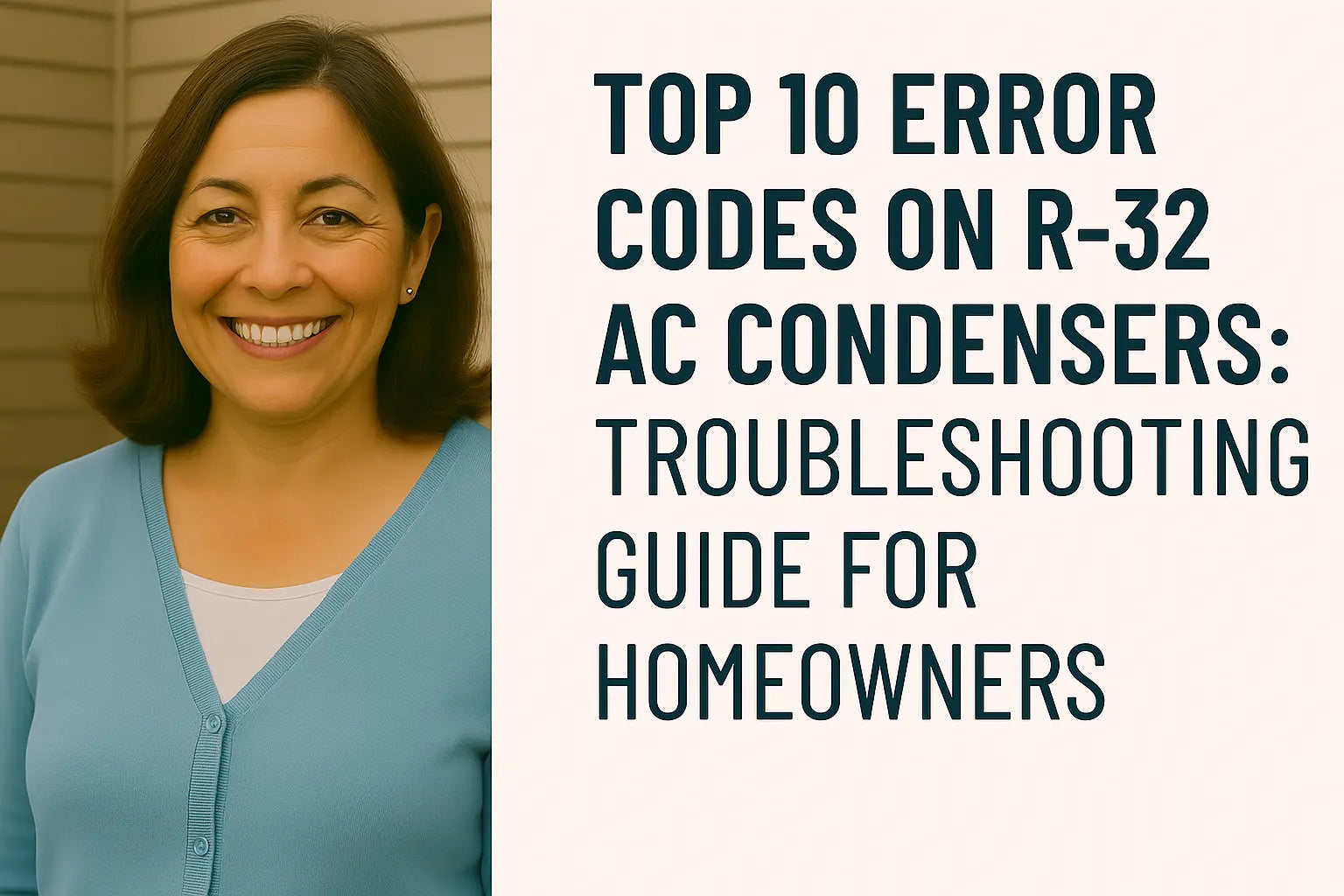Hello There from Samantha!
Hey there, it’s Samantha! If you own or are thinking about upgrading to an R-32 AC condenser, it’s smart to be prepared for those pesky error codes that might pop up on your unit’s display or thermostat. These codes are your system’s way of talking to you — flagging issues before they become major headaches.
Error codes can be confusing at first, but once you know what they mean, you can often solve minor problems yourself or decide quickly when to call a pro. In this guide, I’m breaking down the top 10 error codes you’re likely to see on R-32 systems, what they indicate, and simple steps you can take to troubleshoot safely.
Stick with me and you’ll be the savvy homeowner who knows exactly what your AC’s beeps and blinks mean. Let’s get started!
📟 Understanding Your AC Error Codes: What Are They and Why Do They Matter?
Your AC condenser’s control board constantly monitors sensors and components. When something’s out of spec, it flashes an error code — usually a combination of letters and numbers — to let you know where the problem lies.
Different manufacturers have different codes, but many R-32 systems share similar codes since the components and safety features overlap.
Knowing these codes helps you:
-
Avoid unnecessary service calls
-
Spot issues early to prevent damage
-
Understand your system’s health
For official error code lists and troubleshooting, always check your unit’s installation and service manual or visit the manufacturer’s website, such as Goodman HVAC error codes or Daikin error codes.
🔟 Error Code #1: Low Refrigerant Pressure (E1 or LP)
This code means your system detected that the refrigerant pressure is too low. Possible causes include:
-
Refrigerant leaks
-
Blocked or dirty filters
-
Faulty pressure sensors
Low refrigerant pressure causes poor cooling and can damage the compressor if ignored.
What you can do: Check and replace filters, clear debris from coils, and schedule a leak check with an EPA-certified technician (since handling R-32 refrigerant requires certification). To understand more about refrigerant safety and certification requirements, visit the EPA’s Section 608 technician certification page.
9️⃣ Error Code #2: High Refrigerant Pressure (E2 or HP)
High pressure can mean blocked airflow, dirty condenser coils, or overcharged refrigerant.
What to try: Clean outdoor coils and ensure no debris blocks airflow around the condenser. If it persists, call a pro for a system check. You can find detailed coil cleaning tips at the Energy Saver’s air conditioner maintenance guide.
8️⃣ Error Code #3: Compressor Overcurrent (E3 or OC)
This indicates the compressor is drawing more current than normal, possibly from:
-
Electrical issues
-
Locked compressor
-
Faulty capacitors
Turn off the system and call a licensed technician to prevent further damage. For electrical safety tips related to HVAC equipment, the Electrical Safety Foundation International is a great resource.
7️⃣ Error Code #4: Evaporator Temperature Sensor Fault (E4 or ET)
A sensor monitoring the evaporator coil temperature might be faulty or disconnected.
You can: Check for loose sensor wiring if you’re comfortable. Otherwise, get a pro to diagnose and replace the sensor if needed.
6️⃣ Error Code #5: Condenser Fan Motor Fault (E5 or FM)
If the outdoor fan isn’t spinning or is slow, this error appears.
Make sure nothing blocks the fan blades, clear debris, and check the fan motor wiring. Persistent issues mean fan motor replacement by a technician.
5️⃣ Error Code #6: Communication Error (E6 or COM)
This occurs when the indoor and outdoor units fail to communicate properly.
Resetting the system by turning power off/on can help. Persistent communication errors need professional troubleshooting.
4️⃣ Error Code #7: Freeze Protection (E7 or FZ)
Your unit has detected freezing conditions on the evaporator coil, often due to:
-
Low refrigerant
-
Blocked airflow
-
Dirty air filters
Check filters, clear airflow, and contact an HVAC pro if it continues.
2️⃣ Error Code #9: Outdoor Unit Overheat (E9 or OH)
Outdoor temperatures or poor ventilation cause the condenser to overheat.
Make sure the area around the condenser is clean and well-ventilated.
1️⃣ Error Code #10: System Protection Lockout (E10 or LO)
When multiple faults occur or the system detects critical issues, it locks down to protect itself.
Only a professional should reset this after diagnosing root causes.
🛠️ General Tips for Dealing with Error Codes
-
Always power off your system before inspecting parts.
-
Keep coils and filters clean to avoid common issues.
-
Don’t attempt refrigerant service unless you’re certified.
-
Keep your unit’s manual handy for reference.
-
If in doubt, call a licensed HVAC technician trained with R-32 systems.
You can find certified technicians near you through ACCA's professional directory.
🏁 Samantha’s Final Thoughts
Error codes might sound scary at first, but think of them as your AC’s helpful way of talking to you. Knowing what those beeps and blinks mean empowers you to take action early—saving time, money, and discomfort.
Remember, while many minor issues can be checked or fixed yourself, R-32 systems have specific safety and handling requirements. Certified pros are your best bet for refrigerant-related or electrical issues.
If you want to explore more about keeping your R-32 system happy, check out The Furnace Outlet’s R-32 AC condenser collection.
Want more information about seasonal maintenance for your R-32 AC condenser? Visit my guide: Chill Check.
Stay cool, stay informed, and I’ll catch you next time!
💙 Samantha, Home Comfort Advisor







